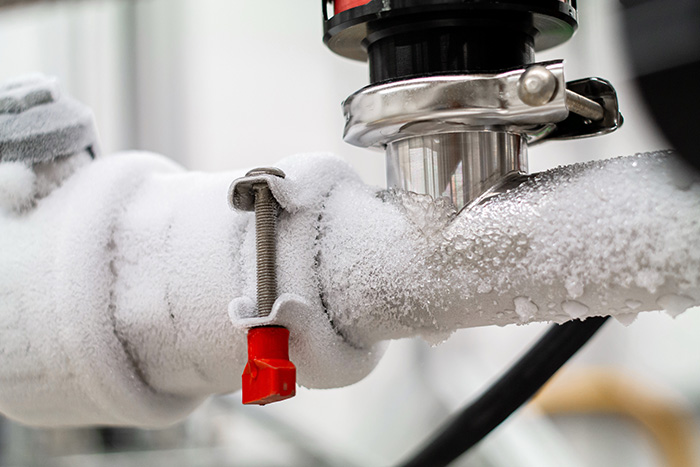Shielding Pipes from Freezing Issues: Essential Tips
Shielding Pipes from Freezing Issues: Essential Tips
Blog Article
What are your concepts on Prevent Frozen Pipes ?

Winter can damage your plumbing, particularly by freezing pipes. Right here's exactly how to avoid it from taking place and what to do if it does.
Intro
As temperatures drop, the risk of icy pipelines boosts, potentially leading to pricey repair services and water damage. Understanding just how to avoid frozen pipelines is important for property owners in cool climates.
Recognizing Frozen Pipelines
What triggers pipelines to freeze?
Pipelines freeze when subjected to temperatures below 32 ° F (0 ° C) for expanded periods. As water inside the pipelines freezes, it broadens, taxing the pipe walls and possibly creating them to burst.
Dangers and problems
Icy pipes can result in water supply disturbances, building damage, and expensive fixings. Burst pipelines can flood homes and cause extensive structural damage.
Indicators of Frozen Pipes
Identifying frozen pipes early can prevent them from rupturing.
How to identify frozen pipes
Seek decreased water flow from taps, uncommon odors or noises from pipelines, and noticeable frost on subjected pipelines.
Prevention Tips
Shielding vulnerable pipes
Wrap pipelines in insulation sleeves or utilize warm tape to protect them from freezing temperature levels. Concentrate on pipes in unheated or exterior locations of the home.
Heating strategies
Keep indoor areas adequately warmed, particularly locations with pipes. Open cupboard doors to enable cozy air to flow around pipelines under sinks.
Protecting Outside Pipes
Garden tubes and outside taps
Detach and drain pipes garden tubes before winter. Set up frost-proof faucets or cover outside taps with insulated caps.
What to Do If Your Pipes Freeze
Immediate actions to take
If you think frozen pipelines, maintain taps open to ease stress as the ice thaws. Use a hairdryer or towels soaked in warm water to thaw pipes slowly.
Long-Term Solutions
Architectural modifications
Consider rerouting pipelines far from exterior wall surfaces or unheated areas. Add additional insulation to attics, cellars, and crawl spaces.
Upgrading insulation
Purchase top notch insulation for pipes, attic rooms, and walls. Appropriate insulation aids maintain consistent temperatures and lowers the threat of frozen pipes.
Conclusion
Protecting against frozen pipes requires proactive procedures and fast actions. By recognizing the reasons, indicators, and safety nets, home owners can shield their pipes throughout winter.
6 Proven Ways to Prevent Frozen Pipes and Protect Your Home
Disconnect and Drain Garden Hoses
Before winter arrives, start by disconnecting your garden hoses and draining any remaining water. Close the shut-off valves that supply outdoor hose bibs and leave the outdoor faucet open to allow any residual water to drain. For extra protection, consider using faucet covers throughout the colder months. It’s also important to drain water from any sprinkler supply lines following the manufacturer’s directions.
Insulate Exposed Pipes
Insulating your pipes is an effective way to prevent freezing. Pipe insulation is readily available at home improvement stores and is relatively inexpensive. Pay close attention to pipes in unheated areas such as the attic, basement, crawl spaces, or garage. Apply foam insulation generously to create a buffer against the cold. You can also wrap your pipes in heat tape or thermostat-controlled heat cables for added warmth.
Seal Air Leaks
Inspect your home for any cracks or openings that could let in cold air. Seal any holes around the piping in interior or exterior walls, as well as the sill plates where your home rests on its foundation. Additionally, make sure to keep your garage door closed unless you’re entering or exiting. Leaving it open creates a significant air leak that can lead to frozen pipes.
Allow Warm Air Circulation
During cold snaps, it’s essential to allow warm air to circulate evenly throughout your home. Leave interior doors ajar to promote better airflow. Open kitchen and bathroom cabinets to help distribute heat consistently around the rooms. If you have small children or pets, be sure to remove any household chemicals or potentially harmful cleaners from open cabinets for safety.
Let Faucets Drip
A small trickle of water can make a big difference in preventing ice formation inside your pipes. When temperatures drop significantly, start a drip of water from all faucets served by exposed pipes. This continuous flow helps prevent the water from freezing. Additionally, running a few faucets slightly can relieve pressure inside the pipes, reducing the chances of a rupture if the water inside does freeze.
https://choateshvac.com/6-proven-ways-to-prevent-frozen-pipes-and-protect-your-home/

Hopefully you enjoyed reading our topic about How to Prevent Your Pipes From Freezing. Thank you so much for spending some time to read our short article. Sharing is good. You just don't know, you may be doing someone a favor. I cherish reading our article about How to prepare your home plumbing for winter weather.
Find Out More Report this page